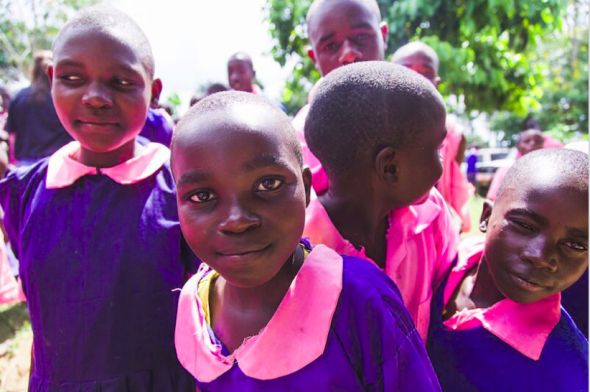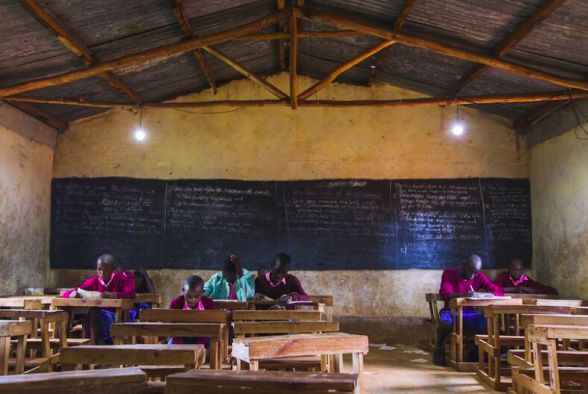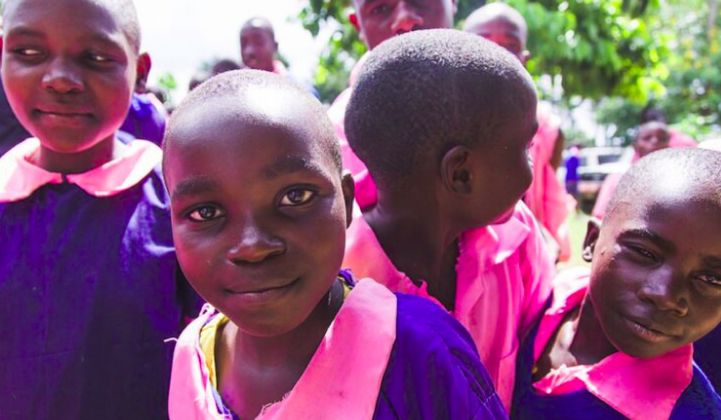The distributed generation business is big and getting bigger.
But to keep it in perspective, it's important to realize that for some, a solar panel paired with a battery is not an opportunity to save $50 a month, but rather a chance to study at night under LED lighting for the first time in a non-electrified village, or the opportunity to take an adult literacy class at night.
Hayes Barnard, SolarCity’s chief revenue officer and GivePower Foundation president, recently talked to GTM about an "underserved" population -- the "291 million children in schools without electricity -- and 1.3 billion people around the world who live without electricity."
SolarCity’s previously self-funded GivePower Foundation is now a 501(c)(3) and is accepting donations from the public. The foundation "lit 511 schools in Africa and Central America" last year, and with a recent $500,000 donation from the Bank of America Charitable Foundation, it "expects to light an additional 1,000 schools by the end of 2015" in Mali, Nicaragua, Kenya, Haiti, Uganda, Nigeria, Malawi, Nepal and Ghana.
A typical system is a single solar panel on a roof that lights two classrooms -- perhaps eight LED lights with a simple, durable storage solution. (It's not a Tesla Powerwall.)
The foundation hopes to light a school in a developing country for each megawatt of solar power SolarCity installs in the U.S. (SolarCity has an outside chance of installing a 1,000 megawatts of solar in 2015.)
On the employee-experience front, Barnard notes, "We're growing our company by 500 employees every month and competing for talent against Google and other tech companies." He notes that many millennials are driven by career growth but are also looking for jobs that have "meaning." When SolarCity employees win internal competitions, Barnard said, "Our employees would rather go to Nepal" to be part of an earthquake relief effort or go to Malawi, Haiti or Ghana to install solar than go to a resort.
Solar companies tend to think alike in their mission to bring solar everywhere.
SunPower's 3S is a low-cost program for providing "rechargeable solar lanterns to families at Smokey Mountain, a massive dumpsite in Manila where about 30,000 people live." SunPower also announced a partnership with GRID Alternatives "involving a donation of 1 megawatt of panels and inverters to support their work."
First Solar has a charitable giving operation "that directs financial and equipment donations to nonprofit organizations in parts of the world where we are developing or building projects, or where we have an interest in encouraging adoption of solar into a particular region."
SunEdison donated $5 million to GRID Alternatives for a minority/workforce development program and is partnering on a $1.2 million initiative to hire more women in solar. Enphase recently expanded by 50 percent an existing partnership with GRID Alternatives for in-kind inverter donations and staff installation time for 3 megawatts of low-income solar installations. Schneider Electric, Yingli, JinkoSolar, and RGS Energy have made smaller donations.
Investors are intrigued by the off-grid power market and its many opportunities to lose money. GTM's senior editor Stephen Lacey has reported on the more than $42 million invested in firms such as Greenlight Planet, a solar lighting company operating in Africa and India; Kenyan mobile payment startup M-KOPA picked up $12.45 million to develop its pay-as-you-go platform, which has more than 150,000 customers. The International Financing Corporation provided a $4.5 million loan to Off-Grid Electric, a Tanzanian solar lighting firm that has support from SolarCity. Fenix International, a company that sells and finances solar-powered battery systems designed for lighting, mobile-phone charging and powering other electronics, raised a $12.6 million venture round earlier this year.





